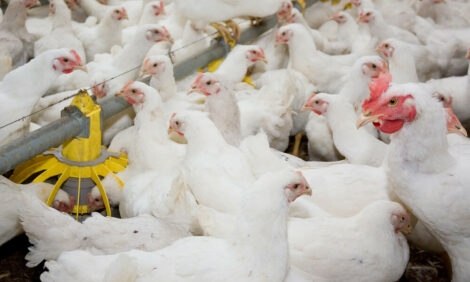



Choosing Correct Air Temperature in Hatcher after Transfer
BELGIUM - The thermal transition between setter and hatcher is explored by Roger Banwell, Hatchery Development Manager with Petersime.In articles such as 'Understanding the Hatching Egg' and 'Handle with care: egg transfer', Petersime discussed the hatching process and the effects of physical shock during transfer between setter and hatcher.
However, there is another factor that plays an important role in terms of hatchability and chick quality: the thermal transition between setter and hatcher, writes Roger Banwell, Hatchery Development Manager.

This article explains how to choose the correct starting temperature in the hatcher. Two things should be avoided in this process: heat damage and thermal shock. These can have a dramatic effect on hatch timing and chick quality. Thermal shocks lead to problems with vascular and yolk sac retraction, causing navel and feathering quality issues. When transferring earlier than day 18, they may also cause many positional problems.
Embryonic Heat Production at Transfer

The graph above displays the heat production curve of the embryos in the setter. It shows a plateau phase between days 16 and 19 (prior to external pipping and hatching). If you look closely, however, there is in reality a small fall in heat production: in this case at day 17 and 19 hours. OvoScan™ detects this fall and slightly increases the air temperature at that point, in order to maintain an egg shell temperature of 100°F. This can be seen in the OvoScan history file below:

This drop in heat production is the reason why you need to adapt your hatcher temperature according to the moment of transfer. For example, at some hatcheries, eggs are transferred both on day 17 and on day 18 for logistical reasons. A transfer at day 17 will require cooler temperatures in the hatcher than transfer at day 18, after the heat production drop.
In this case, when transferring, at day 18, eggs from an OvoScan controlled incubator that is maintaining a shell temperature of 100.0°F into a hatcher1, it is advisable to set the hatcher temperature at 98.2°F to 98.5°F in order to keep a smooth transition. When transferring at day 17, the temperature should be lower.
If the actual process of transferring is as short as possible in reasonably warm conditions, and physical shocks are avoided, the brief temperature variations will have limited or no effect.
Systems without OvoScan
For hatchery managers without the OvoScan system or using multi-stage incubation, the task becomes far more difficult. The graph below is a temperature data logging of an egg in a multi-stage system.

In this situation, temperature reaches almost 103°F by transfer time. Although this example is extreme, temperatures regularly exceed 101.5°F in a multi-stage system. In single-stage hatcheries, similar temperature levels can be created due to fertility variations.
Transfer from such a machine into a hatcher at 98.2°F to 98.5°F would cause a thermal shock, leading to a wide hatch window with a less than optimal chick quality. A better idea is to create a gradual transition to lower temperatures over a longer period in time.
Additional factors
Selecting the correct hatcher temperature after transfer is not always easy, as there are many additional factors that have an effect:
- Air temperature and speed in the hatcher. In this article, we have assumed a four-trolley hatcher but the eight-trolley hatcher has a different air speed and consequently lower air temperatures.
- The Synchro-Hatch™ system uses a fan speed control system that requires even lower air temperatures.
- Variations in fertility, flock age/egg size and storage timing affect the time of the drop in heat production during the plateau phase.
1 Four trolley, non-Synchro-Hatch™ controlled









